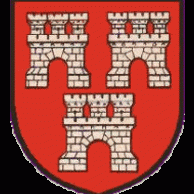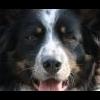-
Posts
763 -
Joined
-
Last visited
Contact Methods
-
Website URL
http://
-
ICQ
0
Profile Information
-
Gender
Male
-
Location
Bristol, UK
Recent Profile Visitors
5,014 profile views
XV571's Achievements

Obsessed Member (4/9)
508
Reputation
-
Hi Pappy, The two schemes are colloquially referred to as Tactical and Air Defence. As Pete 'dambuster' says there was no wraparound Tactical scheme, just the standard Dark Sea Grey & Dark Green over Light Aircraft Grey. This was originally glossy but was changed to a matt finish in the early 1970s, starting about 1971 with the roundels changing to red/blue; many kept the original three colour version on the lower surfaces though. To answer your other questions: 1) Yes, the strike camera was often carried in the forward port well with the mud moving ordnance on the other pylons. A Sparrow is also seen in the opposite well. 2) As Jabba says, the photoflash tank/pod was part of a set released by Odds & Ordnance (later taken over by Alley Cat) Since ModelsForSale are currently down I don't know if they have any for available. The Airfix version should be readily available in the later boxings as it's on the same frame as the gun pod. There are also pictures and diagrams of the flash pod in the Double Ugly British Phantoms Vol.1. While II(AC) and 41 Squadrons were the official recce units, 54 Sqn flew it as a secondary role. The pod continued in use after the Phantoms switched to Air Defence; there are photos of XV406 carrying the EMI pod and photoflash in 111 Sqn colours and also XV400 with 29 Squadron, both presumably being 'borrowed' by 41 Sqn while they were working up their Jaguar capability. Photos of the recce set up are here: Discussion on the Fujimi vs Matchbox pod: Also mentioned in the above is this one on LargeScalePlanes which has a photo of XV406 with the recce kit: https://forum.largescaleplanes.com/index.php?/topic/45752-132-raf-phantom-emi-photo-recce-pod-scratch-build/page/2/ 3) The reinforcement strap was a late addition due to airframes running out of fatigue life. As I recall it was not before the mid 1980s so if you're planning on a 'Mud Mover' then it wouldn't have the strap. Some more information on the reinforcements used during the service life is here: HTH, Jonathan
-
The short answer is unfortunately no, at least not any new projects that I'm aware of. To add to the Falcon vacform and the Brigade resin set, there was a Cutting Edge conversion for the Hasegawa F-4J, see here: https://www.hyperscale.com/2007/reviews/accessories/cec32189previewbg_1.htm which will probably now be in organ selling territory to acquire. The good news is that the companion sheet released for the conversion included markings for Projects Sageburner and Top Flight and are still available albeit at a price: https://fineartofdecals.com/goodiess/?product=ced48494-f4h-1-phantom-decal-super-set @iainpeden, I'm sure you're thinking of the Brigade conversion 🙂. Ted was indeed involved and built one for display by them. I think the conversion set is still being produced although only in small batches; I'd heard that some parts are difficult to cast so reducing the output capacity. It appears on the Hannants website every so often, but is not currently listed. Ken of Brigade Models is very old school and doesn't have any electronic payment setup - when the set first came out I gave him a deposit for two at SMW then when they arrived I had to send him a cheque by post to cover the balance! One thing to note is that the Brigade conversion represents BuNo 142259 in it's First Flight configuration only so would require some changes to make BuNo 142260. For example the Brigade set only has one McDonnell ejection seat while a pair of MB Mk5s were fitted to 142260. For more details of the F4H-1 evolution I'm aniother who thoroughly recommends the Naval Fighters NF108 book by Tommy Thomason. I'd also check his blog pages. To cover all the airframe changes from BuNo 142260 all the way to the final F-4A would really need several different sets to cover all the variations, especially for the intakes. I'd personally love to do one (or several) of the Project LANA Bendix trophy participants. HTH, Jonathan PS @tempestfan Early F4H/F-4 identification is indeed somewhat confusing - the first 47 Phantoms were originally designated F4H-1 but from the 48th F-4B appeared the 'Bs then became the F4H-1 and the earlier jets were then redesignated as F4H-1F 🤪 Some sense was restored when the 1962 common services numbering system was introduced and they just became F-4A and F-4B respectively!
-
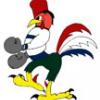
C130,XV208, One plane, 3 very different stories.
XV571 replied to Head in the clouds.'s topic in Work in Progress - Aircraft
Hi Gary, Glad the photo was useful, I found it while researching for my future 'Crud & Custard' Herk project. As requested, here's my modest effort at the C-130A conversion. It was built for the 70th Anniversary C-130 Hercules display hosted by the F-4 Phantom SIG at SMW 2024: One showing the added chine: No, you're not seeing things, there was genuinely a US Marines C-130A (in fact there were two). They were borrowed from the USAF in 1957-58 for in flight refulelling trials, leading to the purchase of the KC-130F by the US Navy. The inspiration was this photo on C-130.net: https://www.c-130.net/g3/c-130-photos/North-American-C-130-Photos/USN-and-USMC-C-130s/C130-USMC along with another showing both aircraft in the book 'Lockheed Hercules' by Francis K Mason published by Patrick Stephens in 1984. Hope you enjoy them. Jonathan -

C130,XV208, One plane, 3 very different stories.
XV571 replied to Head in the clouds.'s topic in Work in Progress - Aircraft
Hi Gary, This is captioned as being XV208 in 1968, note the prop tips 😉 Keep up the fantastic work, I've picked up some very useful tips and pointers from your builds. Your method to create the lower forward fuselage chine on the Italeri kit was especially helpful for my C-130A conversion using the OzMods set. Jonathan -
I was hoping Meng would have done a F-4F next, it'd mainly just need a new rear instrument panel and some unslotted stabilators. Maybe Z-M will beat them to the F; it should be next on their list, unless there's going to be a 'late late' F-4E without the belly strap first. Still, this Terminator release will be a welcome addition to the line-up. The Terminator configuration is similar to the Kurnass 2000 so would be a good starting point to do a late Israeli jet. It'd be great to see them follow up with a Greek AUP too. The machine translation of the Meng Chinese language web page: http://www.meng-model.com/contents/5/1775.html says "The kit accurately restores the two-seat cockpit layout and cabin facilities and includes boarding ladders." The pictures do represent the cockpit upgrades, can't see that they'd then leave out all this detail having done the CAD work to depict the correct layout. Looking at the other pictures, curiously the renders show a belly strap, which was left off their F-4G and F-4E kits. It's not technically incorrect since some of the F-4E Terminators have it, although not the one on the box art (77-0288). I doubt if Meng have re-tooled the lower wing with the strap but, if it is now included, it shows more annoying lack of research to add it to this release while the two earlier kits are of jets fitted with the strap, or ones that require the TISEO they left out of the F-4E boxing! Jonathan
-

Airfix 1/72 Handley-Page Hampden 'Vintage Classic' #A04011V
XV571 replied to Steve147's topic in Aircraft WWII
If you have access to the BBC iPlayer, there were some cockpit shots of the RAF Museum Hampden restoration at Cosford during the recent 'Who Do You Think You Are?' episode with the singer Will Young. His Grandfather Digby Young was a pilot with 61 Squadron and was shot down in Hampden I X2967 during the night of 14-15 November 1940, spending the rest of the war in Stalag Luft 3 (the camp of Great Escape fame). Alternatively, it's scheduled to be repeated on BBC2 at 00:55 on Saturday 14th June, but check the TV listings nearer then to confirm and set your recorder. HTH Jonathan -
To add to the list of photos, there's one on page 45 of Koku Fan Illustrated No.3 on the Phantom showing 67-0296 coded JV formating on a KC-135 along with 67-0268 'Paper Tiger' which has a standard black radome. The same picture is in the Bunrin Do black cover Famous Aircraft of the World #86 for USAF Phantoms. There's another photo of 67-0296 on page 45 in the Osprey Air Vanguard #7 this time refuelling from a KC-135. It's a different sortie to the Koku Fan one as it's carrying what looks to be 6 Mk 82s and a pair of Mk84s on the outboard pylons. The Koku Fan photo has it with wing tanks and a centreline MER with the bottom half of a Mk 81 or 82 visible. This is an extract from the McDonnell paint drawing for USAF F-4s, I've attached the note detailing the radome paint requirements under the nose detail. See also the note detailing the use of a rubber neoprene 'boot' on the tip area; this is why you often see a tonal difference between the tip and main section of the radome: MDD F-4E nose paint-3 by Jonathan Morgan, on Flickr The radome section is in two parts - the radome itself and the attachment ring which is the part that's hinged to allow access to the radar assembly (it's the darker section between the tan and the 'eye' on the first two photos above): Radome from MDD Phantom Manufacturing Illustrations for Japan_Page_09 by Jonathan Morgan, on Flickr If the quantity of 35 is correct, it could have been a batch with a tan coloured primer that was hurried out to Korat to replace some defective or damaged radomes; or, given the pictures showing a black radome in the jig, maybe. a trial with a lighter colour to try improve cooling of the radar components, which would explain why they didn't use one of the greens to match the rest of the nose. I don't think they were unpainted, most pictures of the inside show it to be the light yellowish brown typical of glass fibre components.. Jonathan
- 22 replies
-
- 5
-

-

-

-
- F-4E
- Korat 1971
-
(and 1 more)
Tagged with:
-

Hurricane Mk IIc Wing Tanks - Help needed...
XV571 replied to Sergio Menezes's topic in Aircraft WWII
There are a couple of drawings in the Hurricane questions megathread that may be useful: Maybe @StevSmar has a more detailed version with dimensions? HTH, Jonathan -
Hi Erwin, Most F-4J kits show the later type of RIO panel layout, maybe because it's a nearly identical layout to the F-4S so can be used for both versions. This is the case with the Academy F-4J. What may not be visible in Ron's pictures is that under the 'Rear Cockpit' at the top right corner the second one says 'BuNo 158355at* and above. All others after AFC506'. The upper picture of the early panel is for BuNo 153071z to 158354as before AFC506. I think you probably have Eduard;s FE 1012 which represents the pre-AFC506 layout with the radar controller to the right of the radar screen (it retracts under the instrument panel). *The 'z'/'as'/ 'at' suffix on the BuNo is the Block ID which was originally added after the BuNo at delivery from McAir but was usually left off following repaints. Just checked my copies of both (it is indeed D&S vol 12). The first only has photos of the F-4N, F-4S and RF-4B cockpits; the DaCo book briefly covers the differences between the pre- and post-Project Shoehorn mods for the F-4B but only shows the post-AFC506 F-4J configuration plus the QF-4 variations. Your period of 1970-75 unfortunately covers both types of panel so I'd first go with the BuNo range then check if it has the intake DECM conduits. These were part of the AFC 541 update to add the AN/ALQ-126 ECM suite. As a rule of thumb, if they are present the aircraft will most likely have the later panel layout. Chances are that if your chosen jet is before BuNo 158355 at some point in it's life the RIO panel would be as per the Eduard set so it'd still be okay to use it. HTH Jonathan
-
Way back in 1985 and 1986 IPMS UK magazine published several articles on various F-4F schemes including the then new Norm 81, the experimental schemes and a few of the specials for JG 71, JG74 and JaBo35. The information was sourced from IPMS Germany and redrawn for the magazine. The drawings don't show the fin leading edge in RAL6014 but this may have been an oversight as it's definitely there in the Airdoc photos. As Pete has written, for 38+47 the colours are RAL 6014 for the spine and along the intake upper sides. The rest of the fuselage and undersurfaces were RAL 7035, The wing upper surfaces and outer stabiliator areas were RAL 6014 and RAL 7012. The pattern in the kit instructions looks correct just the colour call outs are off - H47 'Red Brown' is actually RAL 6014 , H324 'Mid Grey' should be RAL 7012 and H338 'Light Grey' the RAL 7035. . If you can find a copy of the Airdoc book mentioned by Vangos it has all the experimental schemes evaluated by the German Air Force from the plain overall RAL 7038 grey on 37+35 to the somewhat wild Blue-Grey & Mod Grey 'Cloud' scheme on 37+51. In addition to the snappy, title the book is No.09 of their Post WWII Combat Aircraft Series and the ISBN is 3-935687-09-5. It was also part of a box set covering the history of GAF Phantoms. I think the book mentioned by Iain is a compilation of the same four parts into one volume. HTH Jonathan
-
Be aware that the Fine Molds F-4B has just the solid leading edge stabilators meaning that only an 'early' B can be made OOB; it's not also strictly accurate as the ejection seats are Mk7s instead of the Mk5s correct for the markings provided. If you want to make a mid to late war subject it's best to go for the F-4N which not only has slotted stabilators but also comes with a choice of fin cap configurations, so will give you almost all you need for a 'late' B to N subject; it just lacks the 'Parrots Beak' version of the under radome pod. On the new slatted wing versions, given that they are releasing a F-4F and 'Late' F-4E the wing will probably just have the thick skinned configuration. Curiously, one of the options in the Clark AFB boxing is 71-0238 which was the second USAF slatted aircraft but was built using the reinforcing strap kit on the production line! The Fine Molds video linked by Gene sort of alludes to the difference, the AI translation is kind of hard to understand at times - it seems to have used Jim (Vicar of Dibley) Trott as the basis for the Natural Language Processor! If they opt to go with the different leading edge slat configuration of the F-4S I suspect there'll be a photoetch strap -possibly a first for them, which would be needed if they do then release a F-4G or a retrofitted F-4E boxing. Finally, the extra parts on the TISEO frame could be another version of the Aero 3 and LAU-7 Sidewinder ralls, if so we might get two frames in the box.
-
Appropriately for the time of year it looks like there's an Easter Egg subject on 48-255🐣! Compare the markings on the decal sheet artwork to the side views in the instuction sheets:
-
Also now showing as in stock at the East Anglian Big Yellow Model Emporium. Although I haven't had the notification email yet, due to scheduling reasons at work, requesting shipping of my John Prescott's worth will have to wait until mid-week Update: the email arrived just after I posted, so they should be popping into the in-boxes of those of us who backordered from the Big H this morning.
-
Hi mackem01, there's not much detail for the period. It starts with an entry on 8th September where 11 Hurricanes, accompanied by a Harrow and a Bombay ferry from Tangmere followed by the rest of the ground crews on the 16th by rail. On the 18th F/L John Simpson attacked a Ju88 claiming it as a probable 20 miles off Tynemouth. Other than listing a couple of fatal accidents the rest of the entries mainly consist of notable postings, promotions and medal awards from the Battle of Britain period until on the 12th December 43 relocated to Drem. If you're after any specific person, date or aircraft let me know and I'll see what's recorded. HTH, Jonathan
-
Peter, thank you for posting the logbook information, it fills a little gap in the Squadron History. Norman Franks updated the history in 2011 following Jimmy Beedle's death in 1989. As the author of Frank Carey's biography he would have had access to Carey's logbooks having met him while researching the book. Since neither publication lists codes I assume Carey only recorded serials against his flights, so cross reference against other pilot's records helps with all their histories.. Looking at the ORBs Sgt Twitchett is first listed as flying N2665 (FT-Z) on 23 September 1940 with his last mention on 15 October taking V7366 (FT-Q) as part of a formation flight. Maybe this was a 'passing out' ceremony for the fledgling fighter pilots making the transition from the OTUs to a squadron flying active offensive operations via 43 Sqn's senior pilots, such as Frank Carey, passing on their combat experience and helping to provide air defence of the northern regions, On your list of 'E' coded Hurricanes, I think the last is possibly a typo since Jimmy Beedle's Squadron History lists L1849 as FT-E, but as you say, there is no L1894; the next serial being L1944. Also, P3386 was with B Flight so I'd be inclined to believe it was actually 'Y' in spite of the details in the Osprey book. It's noted as having destroyed 12 e/a in the hands of four different pilots (Sqn/Ldr Lott plus Sgts Hallowes, Gorrie and Hurry [all in B Flight]) apparently never being damaged in combat. Jonathan (with apologies to @LuisB for hijacking your thread with 43 Squadron Hurricane Is in general)


.thumb.jpg.d63052df9f30de247fb49bf44f442289.jpg)
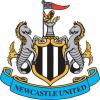

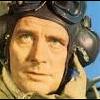
.thumb.jpg.664066d6dc0dd0d08b6eadb937de4cad.jpg)


